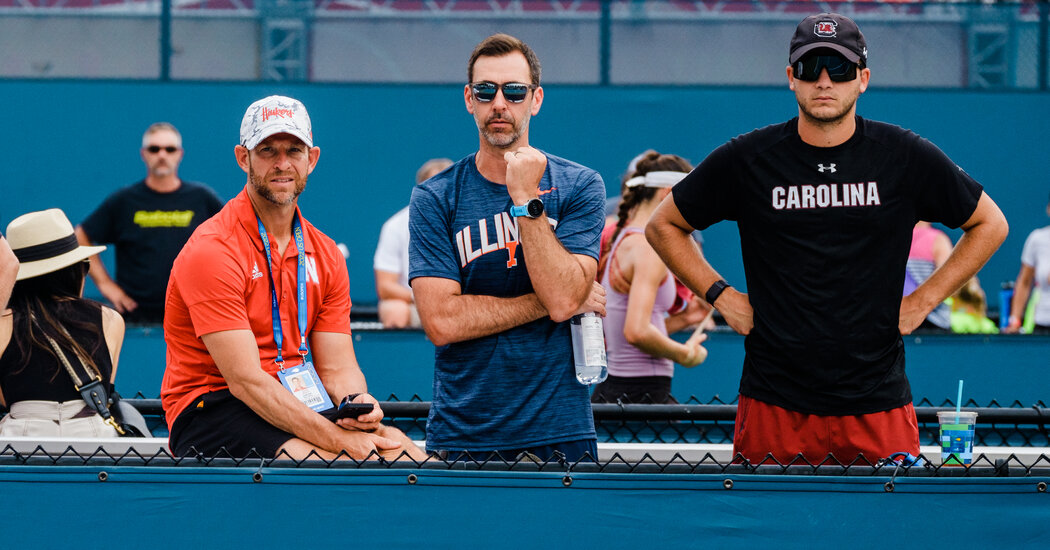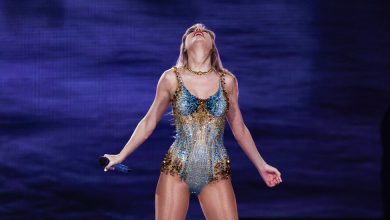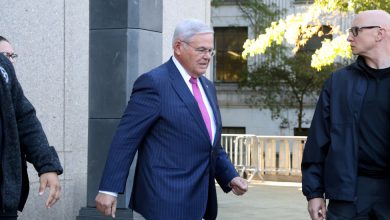
At the U.S. Open, Future College Tennis Stars Are an Unsung Draw
On an outer court at the U.S. Open, tucked into a far corner by the perimeter fencing, Raquel Gonzalez Vilar powered shots over the net in her first-round match of the junior girls’ draw. Two men dressed in orange and black, wearing white hats emblazoned with the words “Oklahoma State,” cheered her on.
On a nearby court, a woman in a bright orange shirt with a fierce tiger on it chatted with a man wearing a black Georgia Tech shirt and hat. Across from them were two men in light blue shirts and hats with Columbia University tennis logos.
They were not fans out for a fun afternoon of tennis-star gazing. They are college coaches who were dotted across the far courts for the juniors competitions, purposely displaying their school colors while searching for the next star recruit or protecting a committed player from a rival’s watchful eye.
“All the coaches come here,” said Jamea Jackson, the incoming women’s head coach at Princeton and a former professional player who also scoured these grounds as an assistant at Oklahoma State. “The U.S. Open is integral to your recruiting calendar.”
While competition on the courts at the U.S. Open is intense, the battle among these coaches in the stands and pathways is sometimes just as cutthroat, with dozens of coaches showing up each year to stock their rosters.
In some cases, coaches introduce themselves after the players have finished for the day to plant a seed with players and eventually sign them.
In other cases, the players have committed to a school, and the coaches are there to offer support and encouragement — and to prove their undying devotion. The two men in orange and black — Chris Young, the women’s tennis head coach at Oklahoma State and Jaime Sanchez-Cañamares, his top lieutenant — were watching Gonzalez Vilar.
The coaches had already persuaded Vilar to attend Oklahoma State, but she was thrilled that they had shown up and celebrated her first-round win by jumping into their arms.
“I really enjoyed today because they helped me along and gave me energy,” she said through an interpreter. “It was nice to have them here with me.”
If you are not looking for these coaches, they could slip by, unnoticed. If you are, they are easy to spot behind their crisp shirts and hats in school colors. Over on Court 5, a man in University of Washington gear watched a match intently. Another, in a U.C.L.A. shirt, sat nearby, and across the way Arizona, Arizona State, Northern Arizona, Pepperdine, Mississippi and many more were represented, too.
The U.S. Open is not the only tournament to which coaches flock. They also pop up (in fewer numbers) at events in Europe. But it is the big junior tournaments in Kalamazoo, Mich., and San Diego and the Orange Bowl event near Miami that, along with the U.S. Open, teem with college coaches dressed like models for athletic-department logo-wear.
“You never see college coaches without their gear on,” said Parsa Nemati, a college tennis recruiting expert and marketing consultant for Universal Tennis Rating, who also serves as the social media coordinator for the Tennis Channel.
Billy Pate, the men’s coach at Princeton, joked that the gear turned coaches into “billboards.” But it is important to fly the school’s colors, if only to grab the attention of the players.
College tennis is an increasingly enticing alternative for young players who may not be ready for the rigors of the professional tour. For some players, college is an easy choice because of the potential opportunity for free coaching, free food, free training facilities, free medical attention and, in many cases, free education.
According to Nemati, the recruiting expert, 21 of the 64 boys in the draw are committed to colleges and at least four more will soon declare. The number of girls is slightly lower, he said. The rest consider themselves good enough to turn professional or are still undecided.
Most Americans and their families are aware of the college option. But Jordan Szabo, the assistant women’s coach at Texas A&M, said some of the international players were less aware and sought guidance.
For Szabo, who is Australian, the U.S. Open is not very productive because so many coaches are there and most of the players are already spoken for. But like most coaches, he knows it is too important to pass up. On Monday, he had his eye on a hard-serving Australian girl and watched to evaluate the intangibles that do not appear on any rankings or stat sheets.
Finding the right moment to say hello is an art, especially with other coaches lurking nearby. A coach may have to wait patiently while a rival filibusters with the player. No one wants to be the one to barge in on a conversation or appear too aggressive in front of the players.
“It’s awkward,” Szabo said. “Yesterday, a girl walked up to me to say hi when another coach had been waiting. We had just spoken the day before, and she obviously felt it would be rude not to say hello. It can just be really awkward, but it’s part of it.”
Pate, the Princeton men’s coach, said most coaches respectfully — but not always — backed off when a player had committed elsewhere. But there are other challenges to fend off. National tennis federations often do not want their players to attend college, preferring that they remain under the federation’s umbrella and then go pro. And agents, who profit when a player becomes a professional, can be an obstacle, too.
Gina Suarez-Malaguti, a women’s associate head coach at Virginia, has been recruiting at the U.S. Open for years. She said that at a big event such as the U.S. Open, juniors breathe the same intoxicating air and share the same hallways with top pros.
“They are in a different cloud here,” Suarez-Malaguti said, “thinking anything is possible.”
She employs unique methods to gain a player’s interest and trust.
“I can’t tell you my secrets,” she smiled. “But, you’ve got to be creative.”
Another danger can arise if a college-bound player does too well at a major event. Success at the top level can suddenly alter plans.
“Sometimes, they need a bad loss to bring them back to earth and make them think about college,” said German Dalmagro, the associate head coach of the Illinois women’s team.
Dalmagro, who also coached at Nebraska and Kansas, said there were many more coaches at the U.S. Open now than in previous years. The big tournaments are like conventions, and many coaches get along well. Some have even worked together at stops in their careers. Most greet one another cordially, but in an optimal world, each would be the only one there, with unfettered access to players.
“We have a joke,” said Howard Endelman, the head men’s coach at Columbia, who was on site to watch his top recruit, Michael Zheng. “We always say, ‘Hi, nice to see you.’ But they don’t want to see me here, and I don’t want to see them.”
Coaches also use social media, email and texts to reach out to players, beginning on June 15 of their sophomore year in high school. Matchmaking services, like Stars and Stripes Tennis Recruitment, connect under-scouted players, usually from overseas, with colleges. Some players fish for scholarships by listing preferences on websites.
Daniil Medvedev, last year’s U.S. Open men’s champion and the current world No. 1, used such a tactic when he was a little-known junior, listing every Ivy League college as a school of interest to him.
When Endelman saw that, he hopped on a plane for a junior tournament in Linz, Austria, to watch Medvedev. Endelman laughs at himself now, knowing what Medvedev has become.
“I looked at his strokes, which are unorthodox, and I was like, ‘I don’t know,’” he said with a chuckle. “Shows what I know.”
But he also knew enough to be on hand to support Zheng, lest some other coach in different colors gets too close.




